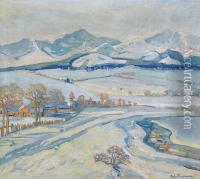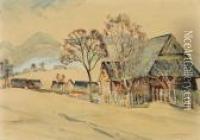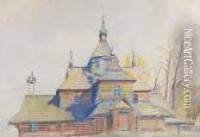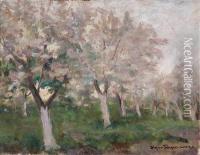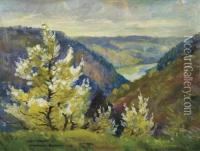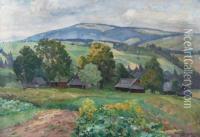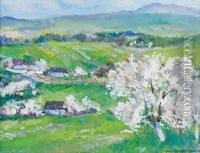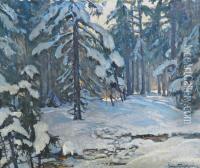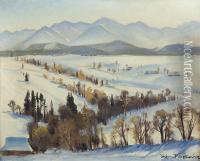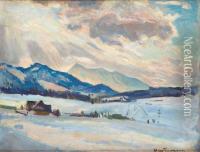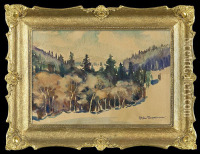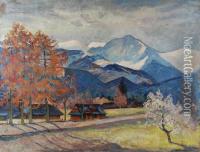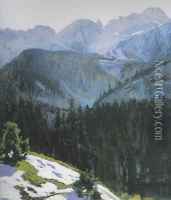Stefan Filipkiewicz Paintings
Stefan Filipkiewicz was a Polish painter and designer, prominent during the late 19th and early 20th centuries. Born on October 28, 1879, in Kraków, then part of the Austro-Hungarian Empire, Filipkiewicz was an artist who is best known for his landscape paintings and his participation in the Polish art nouveau movement at the turn of the century. He studied at the Academy of Fine Arts in Kraków under the guidance of Józef Mehoffer and Stanisław Wyspiański, who themselves were notable figures in Polish modern art. His education continued in Munich and Paris, cities that were central to the development of European art at the time.
Filipkiewicz's work was influenced by Symbolism and Art Nouveau, and he often incorporated elements of Polish folklore and romantic nationalism into his paintings. His landscapes often depicted the Tatra Mountains, a range that holds significant cultural importance in Poland. In addition to his paintings, Filipkiewicz also worked on decorative arts and stage designs, contributing to various cultural projects in Poland.
However, Filipkiewicz's life took a tragic turn during World War II. Being in occupied Poland, he was arrested by the Gestapo for his involvement in the Polish underground resistance. After his arrest, he faced a series of imprisonments and ultimately was executed by the Nazis in the Płaszów concentration camp on July 23, 1944.
Despite the tragic end to his life, Stefan Filipkiewicz left a lasting legacy in Polish art. His works are celebrated for their technical prowess, emotive qualities, and the unique blend of Polish tradition with European art movements. Today, his paintings can be found in various museums and private collections, both in Poland and abroad.
